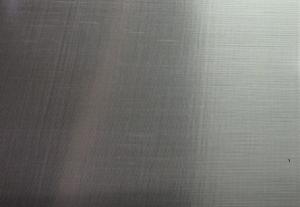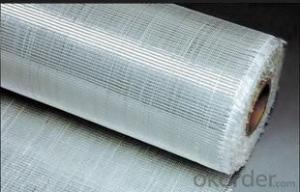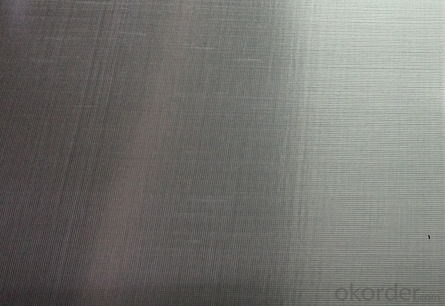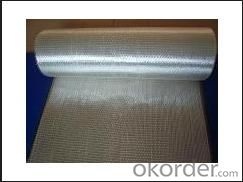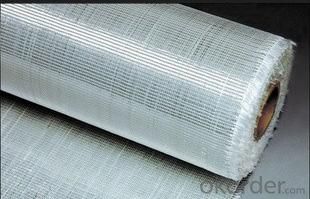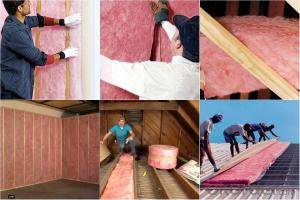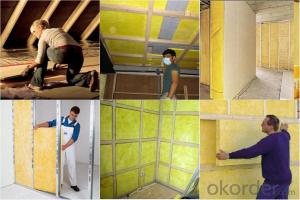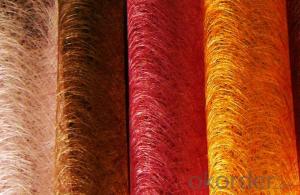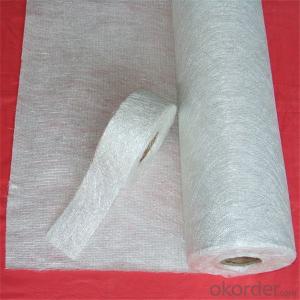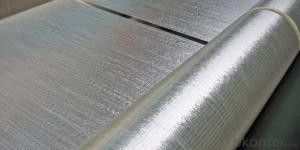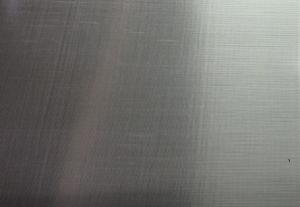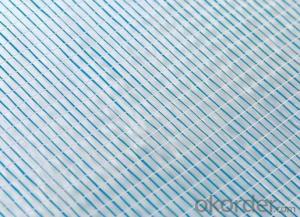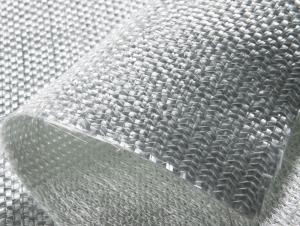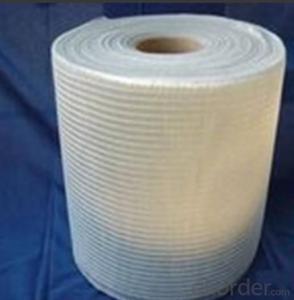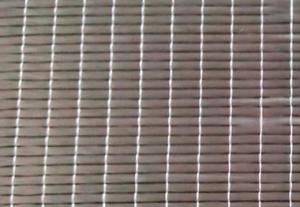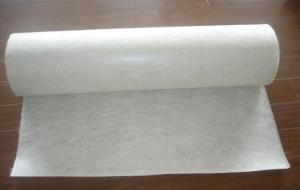Fiberglass Mat Tissue Unidirectional Fabric 800gsm 1000mm
- Loading Port:
- Shanghai
- Payment Terms:
- TT or LC
- Min Order Qty:
- 2000 m²
- Supply Capability:
- 30000 m²/month
OKorder Service Pledge
OKorder Financial Service
You Might Also Like
Structure of unidirectional fiberglass fabric Description:
An engineering material, which has many excellent characterstics, such as anti-burning, corrosion resistent, stable structure, heat-isolating, minimum elongated shrinkage, high intensity, etc. This new material product has already covered many domains such as electric appliance, electronic, transportation, chemical engineering, architectural engineering, heat insulation, sound absorption, fire prevention and environmental protection, etc. According to fabric organizational structure and appearance, there are such kind of products: plain weave, twill weave, satin weave, gauze weave.
Main Features of the unidirectional fiberglass fabric:
1)Plain veave,even thickness and low fuzz;
2)High strength in both warp and weft direction;
3)Incombustibility,corrosion resistance and heat resistance;
4)E-Grade Fabric (E-fiberglass Textile Cloth) has excellent electricity insulation property.
Unidirectional fiberglass fabric Images:
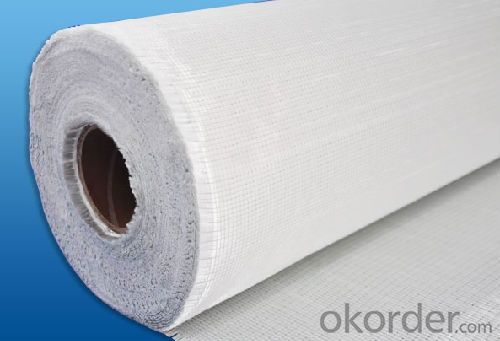
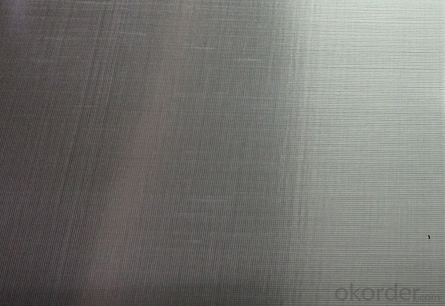
Unidirectional Specification:
Code | Total weight g/m2 | Weight of each layer, g/m2 | Width mm | ||||
0° | 90° | +45° | -45° | Chopping | |||
E-L300 | 350 | 300 | 50 | 200~2600 | |||
E-L350 | 400 | 350 | 50 | 200~2600 | |||
E-L400 | 450 | 400 | 50 | 200~2600 | |||
E-L450 | 500 | 450 | 50 | 200~2600 | |||
E-L500 | 550 | 500 | 50 | 200~2600 | |||
E-L600 | 650 | 600 | 50 | 200~2600 | |||
E-L650 | 700 | 650 | 50 | 200~2600 | |||
E-L900 | 930 | 880 | 50 | 200~2600 | |||
E-L700/200 | 950 | 700 | 50 | 200 | 200~2600 | ||
E-T200 | 200 | 200 | 200~2600 | ||||
E-T450 | 450 | 450 | 200~2600 | ||||
E-T500 | 500 | 500 | 200~2600 | ||||
E-TM300/300 | 600 | 300 | 300 | 200~2600 | |||
E-TM600/450 | 1050 | 600 | 450 | 200~2600 | |||
E-LM750/200 | 950 | 750 | 200 | 200~2600 | |||
FAQ of woven roving:
Delivery Detail: 15-21days
Other spec. can be custom made as per customer's request.
- Q: Is fiberglass mat tissue suitable for wastewater treatment applications?
- Fiberglass mat tissue is indeed suitable for wastewater treatment applications. This material exhibits resistance to chemicals, corrosion, and degradation, rendering it a prime option for a range of industrial uses, including wastewater treatment. Its versatility allows for its utilization as filtration media, effectively separating solid particles from wastewater. It can also serve as a lining material, preventing corrosion in tanks and pipes, as well as reinforcing concrete structures employed in wastewater treatment plants. Moreover, fiberglass mat tissue boasts exceptional mechanical strength, dimensional stability, and thermal resistance, further bolstering its suitability for wastewater treatment purposes. Overall, this material proves itself as a dependable and efficient choice for employment in wastewater treatment procedures.
- Q: Does fiberglass mat tissue require any maintenance?
- Once installed, fiberglass mat tissue typically does not need any maintenance. This material is designed to be tough and long-lasting, capable of enduring various environmental conditions. Unlike other materials, fiberglass mat tissue is resistant to rot, corrosion, and decay, making it a low-maintenance choice for many applications. Nevertheless, it is crucial to emphasize that proper installation is essential to ensure the longevity and effectiveness of fiberglass mat tissue. Following the manufacturer's guidelines, it should be installed in a way that securely bonds and seals it to the surface. This will help prevent any potential issues or damage that could result from improper installation. Occasionally, fiberglass mat tissue may require cleaning to remove accumulated dirt or debris. This can be achieved by using mild soap and water or by adhering to the manufacturer's recommended cleaning instructions. In summary, while regular maintenance is not required for fiberglass mat tissue, it is important to promptly address any issues or damages to prevent further deterioration. Regular inspections and necessary repairs should be conducted to ensure the material's continued performance and longevity.
- Q: Is fiberglass mat tissue resistant to moisture?
- Yes, fiberglass mat tissue is resistant to moisture.
- Q: Can fiberglass mat tissue be used for mold-making?
- No, fiberglass mat tissue is not typically used for mold-making. Fiberglass mat tissue is a lightweight material made from randomly oriented glass fibers bonded together with a binder. It is commonly used in insulation, construction, and automotive industries for reinforcement purposes. For mold-making, other materials such as silicone, latex, or polyurethane are more commonly used. These materials have the necessary properties to create flexible and accurate molds that can reproduce intricate details. They are also easy to work with and can be poured or brushed onto the original object to create a mold. Fiberglass mat tissue, on the other hand, lacks the flexibility and accuracy required for mold-making. It is not designed to be easily molded into complex shapes or capture fine details. Additionally, it may not provide the desired level of flexibility needed to remove the original object from the mold without causing damage. Therefore, it is recommended to use specific mold-making materials that are specifically designed for this purpose, rather than attempting to use fiberglass mat tissue.
- Q: Can fiberglass mat tissue be used for making lightweight ceilings?
- Yes, fiberglass mat tissue can be used for making lightweight ceilings. Fiberglass mat tissue is a thin and lightweight material made from fiberglass strands that are bonded together with a binder. It is commonly used in construction and building applications due to its excellent strength-to-weight ratio. When used for making lightweight ceilings, fiberglass mat tissue can provide several advantages. Firstly, it is lightweight, which makes it easier to handle and install. This can save time and effort during construction or renovation projects. Additionally, fiberglass mat tissue is also known for its high tensile strength and durability, making it a suitable choice for ceilings that need to withstand various loads and stresses. Furthermore, fiberglass mat tissue has good thermal insulation properties, which can help in maintaining a comfortable indoor environment. It can also offer sound insulation benefits, reducing noise transmission between different spaces or floors. Moreover, fiberglass mat tissue is resistant to moisture, mold, and mildew, which makes it suitable for areas with high humidity or moisture concerns such as bathrooms or kitchens. It is also non-combustible, providing an added level of fire resistance to the ceiling structure. In conclusion, fiberglass mat tissue can indeed be used for making lightweight ceilings. Its lightweight nature, strength, durability, thermal and sound insulation properties, as well as resistance to moisture and fire, make it a suitable choice for various ceiling applications.
- Q: Is fiberglass mat tissue suitable for chemical storage tanks?
- Fiberglass mat tissue is generally considered suitable for chemical storage tanks. Fiberglass itself is known for its excellent chemical resistance properties, making it a popular choice for storing a wide range of chemicals. Additionally, fiberglass mat tissue is typically used as a reinforcement layer in the construction of fiberglass tanks, providing added strength and durability. However, it is important to note that the specific chemical being stored must be taken into consideration. Some highly corrosive or reactive chemicals may require more specialized materials or additional protective coatings to ensure the integrity of the storage tank. Therefore, it is always recommended to consult with a professional engineer or manufacturer to determine the most suitable materials for a specific chemical storage application.
- Q: What is the moisture absorption rate of fiberglass mat tissue?
- The moisture absorption rate of fiberglass mat tissue can vary depending on various factors such as the specific type of fiberglass mat tissue and its manufacturing process. However, in general, fiberglass mat tissue is known to have a relatively low moisture absorption rate. This is due to the hydrophobic nature of fiberglass, which means it repels water and is not easily permeated by moisture. As a result, fiberglass mat tissue is often used in applications where moisture resistance is important, such as in roofing materials, insulation, and automotive parts. While the exact moisture absorption rate may not be readily available without specific product information, fiberglass mat tissue is generally considered to be a moisture-resistant material.
- Q: What is the chemical resistance of fiberglass mat tissue?
- Fiberglass mat tissue exhibits excellent chemical resistance due to the inherent properties of the fiberglass material. The mat tissue is typically composed of glass fibers that are woven or bound together, providing a barrier against a wide range of chemicals. The glass fibers themselves are highly resistant to corrosion, making fiberglass mat tissue suitable for use in environments where exposure to chemicals is a concern. The chemical resistance of fiberglass mat tissue can vary depending on the specific resin or binder used in the manufacturing process. Different types of resins may provide enhanced resistance to certain chemicals, while others may be more susceptible to degradation. It is important to consider the specific chemicals that will come into contact with the fiberglass mat tissue and select a resin or binder that is compatible with those substances. In general, fiberglass mat tissue is known for its resistance to acids, alkalis, solvents, and many other chemicals commonly found in industrial and commercial settings. It can withstand exposure to a wide range of corrosive substances, making it a versatile and durable material for various applications. However, it is worth noting that prolonged exposure to highly concentrated or aggressive chemicals may eventually cause some degradation or deterioration of the fiberglass mat tissue. Therefore, it is essential to consult the manufacturer's specifications and guidelines to ensure proper chemical compatibility and performance in specific environments.
- Q: How is fiberglass mat tissue bonded to surfaces?
- Fiberglass mat tissue is commonly bonded to surfaces using adhesive materials. The bonding process involves applying the adhesive onto the surface where the fiberglass mat tissue is to be attached. The adhesive is typically a two-part epoxy resin or a specialized fiberglass adhesive that is specifically designed for bonding fiberglass materials. The adhesive is mixed according to the manufacturer's instructions and then spread evenly onto the surface using a brush, roller, or trowel. The fiberglass mat tissue is then carefully placed onto the adhesive-covered surface and pressed down firmly to ensure proper adhesion. The adhesive is left to cure for the recommended amount of time, allowing it to harden and create a strong bond between the fiberglass mat tissue and the surface. This bonding method ensures that the fiberglass mat tissue is securely attached to the surface, providing reinforcement, protection, or other desired properties depending on the application.
- Q: What is the weight of fiberglass mat tissue per square meter?
- The weight of fiberglass mat tissue per square meter can vary depending on the specific product and manufacturer. However, on average, fiberglass mat tissue typically weighs around 100-300 grams per square meter.
Send your message to us
Fiberglass Mat Tissue Unidirectional Fabric 800gsm 1000mm
- Loading Port:
- Shanghai
- Payment Terms:
- TT or LC
- Min Order Qty:
- 2000 m²
- Supply Capability:
- 30000 m²/month
OKorder Service Pledge
OKorder Financial Service
Similar products
Hot products
Hot Searches
Related keywords
